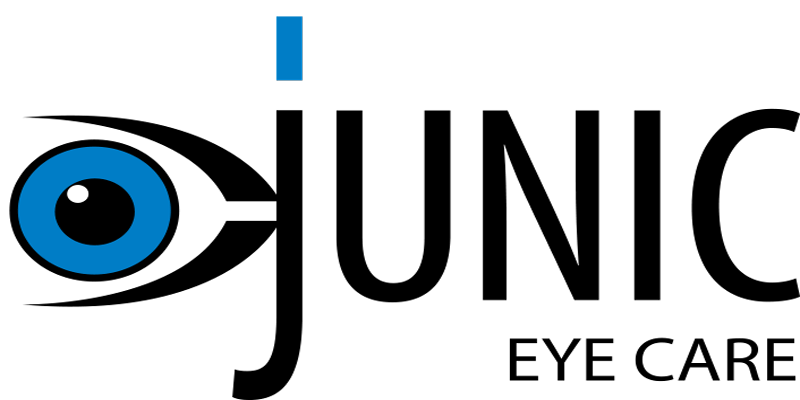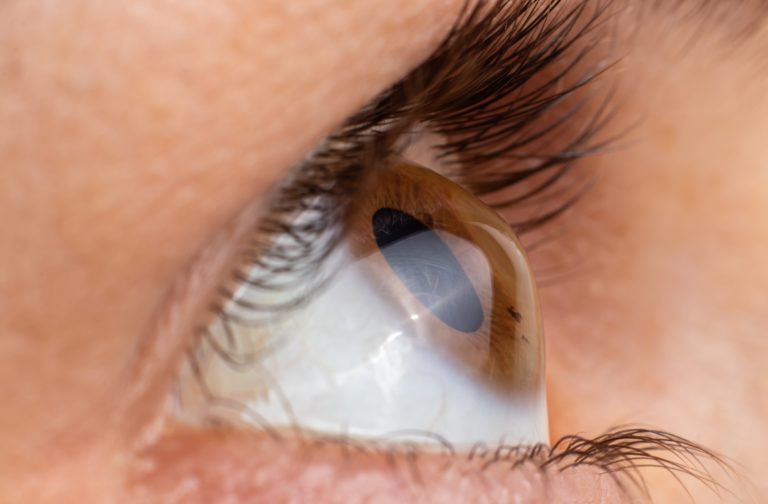What if the changes in your vision aren’t just a normal part of aging? Could an unusual eye condition be the reason behind your blurred or distorted eyesight?
You might be experiencing early stage Keratoconus; a progressive eye condition where the cornea thins and bulges into a cone shape, leading to distorted vision. It’s an eye problem that generally starts to affect people between the ages of 10 and 30 and can be treated surgically or non-surgically.
But first of all, who am I? I’m Juliet Menakaya, owner and principal optometrist at Junic Eye Care. I am deeply motivated to help individuals manage complex eye conditions like keratoconus, through personalized, compassionate eye care. I understand how overwhelming it can be to navigate vision issues.
So keep reading to explore your choices for keratoconus treatment in Canberra.
KEY TAKEAWAYS:
- Early detection and treatment of keratoconus are crucial to preventing serious vision loss.
- Non-surgical options, such as specialized contact lenses, can be effective in managing keratoconus.
- Surgical options are available for advanced cases to restore vision and improve corneal shape.
Understanding Keratoconus
What is keratoconus, and why does it matter so much to your vision? Keratoconus is an eye condition that distorts vision and can significantly affect how you see the world, making simple tasks like reading or driving increasingly difficult. The cornea, which is normally round, becomes uneven, leading to blurred vision that standard eyeglasses or soft contact lenses often can’t correct effectively.
While the exact cause of keratoconus remains uncertain, several factors can increase the likelihood of developing this condition. Genetics play a role, as it often runs in families. Environmental factors, like frequent eye rubbing or chronic eye irritation, may also contribute. Additionally, certain conditions, such as Down syndrome or connective tissue disorders like Ehlers-Danlos syndrome, are linked to a higher risk of keratoconus. Early detection and intervention are key to managing keratoconus effectively, which is why understanding its causes and early signs is crucial.
A Western Australian research study published in 2022 found the following:
| Details | |
|---|---|
| Prevalence | At the time of the study, 3.4% of the 28-year-old participants had keratoconus. |
| Incidence | Of those, 2.2% (about two thirds) experienced the emergence of the condition between ages 20 and 28 |
| Risk Factors | Higher risk was associated with being male, having shorter axial length, poorer visual acuity, higher astigmatism, and myopia. A notable link was also found between sleep apnea and keratoconus. |
Source: https://www.aaojournal.org/article/S0161-6420(22)00933-2/fulltext
Diagnosing Keratoconus in Canberra
How can you be sure if keratoconus is affecting your vision? The key lies in a comprehensive eye exam. The earlier you receive a correct diagnosis, the better, as keratoconus can progress over time, making it harder to manage. During a keratoconus eye exam, a range of diagnostic tests is performed to assess the health of your cornea. Corneal topography, for instance, creates a detailed map of your cornea’s surface, highlighting any irregularities that could indicate keratoconus. Pachymetry measures the thickness of your cornea, while a slit-lamp exam allows us to examine the eye’s structures closely.
At our eye care practice in Canberra, we also utilise advanced diagnostic tools to provide a more accurate assessment. Optical Coherence Tomography (OCT) scans offer a high-resolution, cross-sectional image of the cornea, helping us detect even subtle changes. Corneal mapping techniques further enhance our ability to pinpoint keratoconus with precision. Additionally, the Oculus Keratograph 5M is instrumental in providing a detailed analysis, which can be very helpful for both diagnosis and ongoing management of keratoconus. These advanced tools ensure that we can detect keratoconus at its earliest stages and tailor a treatment plan to suit your needs.
Non-Surgical Keratoconus Treatment Options
Can keratoconus be managed without surgery? For many people, non-surgical treatments can effectively address their condition, especially in its early stages. Initially, eyeglasses and soft contact lenses are often prescribed. These options can work well for mild keratoconus by correcting vision distortions caused by the irregular shape of the cornea. However, as keratoconus progresses, these solutions may no longer provide adequate clarity, leading us to explore more specialised treatments.
Rigid Gas Permeable (RGP) lenses offer a significant step up in managing moderate to advanced keratoconus. Unlike soft lenses, RGP lenses maintain their shape on the eye, creating a smooth surface over the cornea and improving vision. While they can initially feel less comfortable, most patients adapt over time, appreciating the sharper vision these lenses provide. However, for those who struggle with the fit or comfort of RGP lenses, hybrid and scleral lenses are excellent alternatives.
Hybrid lenses combine the best of both worlds: the sharpness of RGP lenses with the comfort of soft lenses. They are particularly beneficial for individuals who need clearer vision but find traditional RGP lenses challenging to comfortably wear. Scleral lenses, on the other hand, are larger and rest on the white part of the eye, vaulting over the cornea. This makes them ideal for severe keratoconus cases, as they provide both exceptional vision correction and comfort. The process of custom fitting these lenses ensures that each patient receives optimal results, allowing them to maintain a high quality of life despite their condition.
Surgical Keratoconus Treatment Options
When non-surgical methods no longer suffice, what surgical options are available for treating keratoconus? For those with more advanced keratoconus, surgical interventions can halt the progression of the condition and improve vision. One of the most common procedures is Corneal Collagen Cross-Linking (CXL). This treatment works by strengthening the corneal tissue to prevent further thinning and bulging. The Dresden protocol is the traditional approach, involving the removal of the corneal epithelium followed by the application of riboflavin drops and UV light. Recent advancements, such as accelerated CXL and epi-on techniques, offer quicker recovery times and less discomfort, making them suitable for various stages of keratoconus.
For patients seeking to reshape their cornea and enhance vision without undergoing a full corneal transplant, Intracorneal Ring Segments (ICRS) provide a viable option. These tiny, crescent-shaped inserts are placed within the cornea to flatten its cone shape, thereby reducing visual distortions. ICRS can be particularly effective when combined with CXL, as the cross-linking procedure stabilises the cornea while the ring segments improve its shape. This combination often leads to better visual outcomes, especially in cases where keratoconus is still progressing.
In more severe cases, where the cornea has become too thin or scarred, a corneal transplant may be necessary. There are two main types of transplants: Deep Anterior Lamellar Keratoplasty (DALK) and Penetrating Keratoplasty (PK). DALK involves replacing only the damaged outer layers of the cornea, preserving the healthy inner layers, which reduces the risk of rejection. PK, on the other hand, involves a full-thickness transplant, replacing the entire cornea. Both procedures have high success rates, and while recovery can take several months, the long-term visual outcomes are often excellent. Each surgical option is carefully considered based on the patient’s specific needs, ensuring the best possible results.
To learn more about the various keratoconus treatment options available for patients, watch the following video by Dr Joseph Allen from the Doctor Eye Health channel.
YOUTUBE EMBED ” What is Keratoconus – 5 Keratoconus Treatments ” [ https://www.youtube.com/watch?v=CfYqz-HEfwY ]
Living with Keratoconus
How do you adjust to life with keratoconus? Living with this condition requires some changes, but with the right strategies, it’s entirely manageable. The impact on daily activities can vary, but it’s important to remain proactive in managing your eye health. Simple tasks like reading or driving at night may become more challenging, but with the appropriate lenses or treatments, you can maintain a good quality of life. Keeping up with proper lens hygiene is crucial, especially if you wear contact lenses, as it helps prevent complications like infections that can worsen your condition.
Regular monitoring and follow-up appointments are vital in tracking the progression of keratoconus. Your treatment plan may need adjustments as your corneal condition changes over time. By staying committed to routine check-ups, you can ensure that your vision remains as stable as possible. Additionally, educating yourself about keratoconus and its management can empower you to make informed decisions about your care. Support from your optometrist and having access to the latest information will help you navigate the challenges and maintain your eye health effectively.
CONCLUSION
Keratoconus is a progressive eye condition that can significantly impact your vision if left untreated, but there are both non-surgical and surgical options available to manage it effectively. Early detection, regular monitoring and proactive care through comprehensive eye exams is crucial in preventing the more severe consequences of the condition.
Without proper care, keratoconus can progress to the point where everyday activities like driving or reading become extremely difficult.
Don’t wait until it’s too late—take the first step today by booking your eye care consultation.
To visit our optometry practice, click the “Book Online” button at the top of the page or call (02) 6152 8585 today.
You’ll find our clinic conveniently located in the Molonglo Health Hub, just a short 10 minute drive from central Canberra, with plenty of free parking when you get here.

CANBERRA OPTOMETRIST
Juliet obtained her Doctor of Optometry degree from the University of Benin, Nigeria in 2006. She completed an internship programme before migrating to Australia, where she completed a master’s degree in public health at the University of Sydney in 2014. Following this, Juliet obtained a Master of Orthoptics from the University of Technology Sydney (UTS) in 2017.
Juliet has completed her competency in optometry examination with OCANZ (Optometry Council of Australia and New Zealand), and obtained her ophthalmic prescribing rights from ACO (Australian College Of Optometry Victoria). Juliet has worked in various positions, including retail Optometry, the Ophthalmology Department at Canberra Hospital, and more recently, at the John Curtin School of Medical Research (ANU).
As a dedicated Canberra optometrist, Juliet is passionate about helping people with low vision, and binocular vision anomalies hence her interests in Low Vision Rehabilitation, Eccentric Viewing Training and Paediatric optometry.

